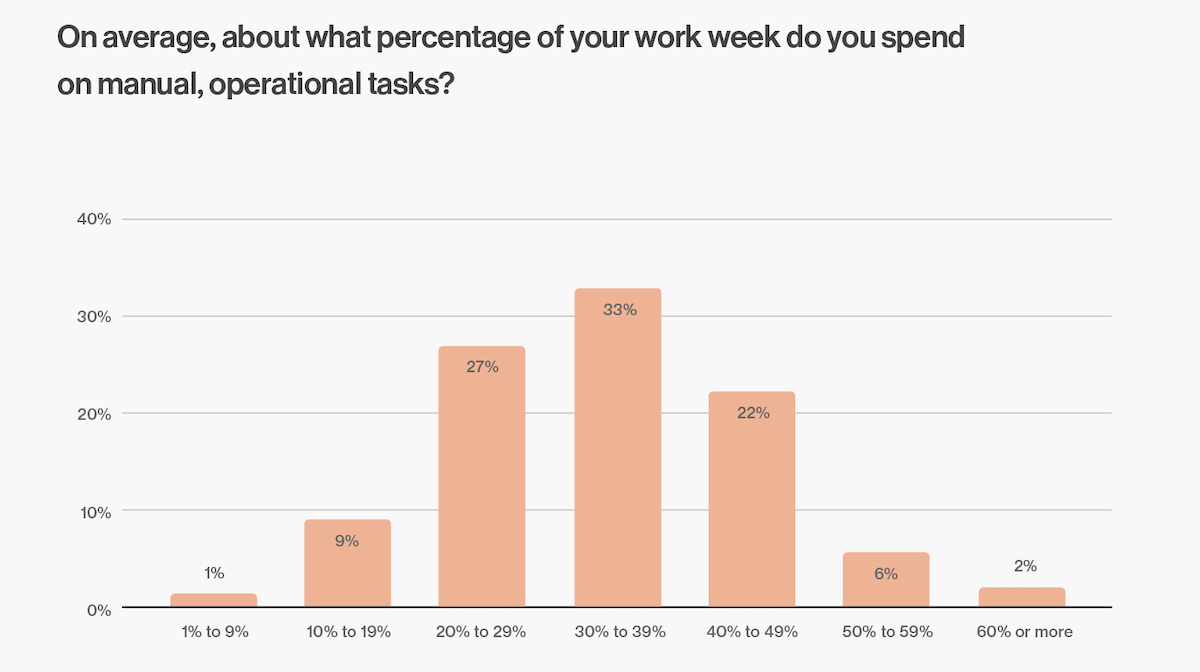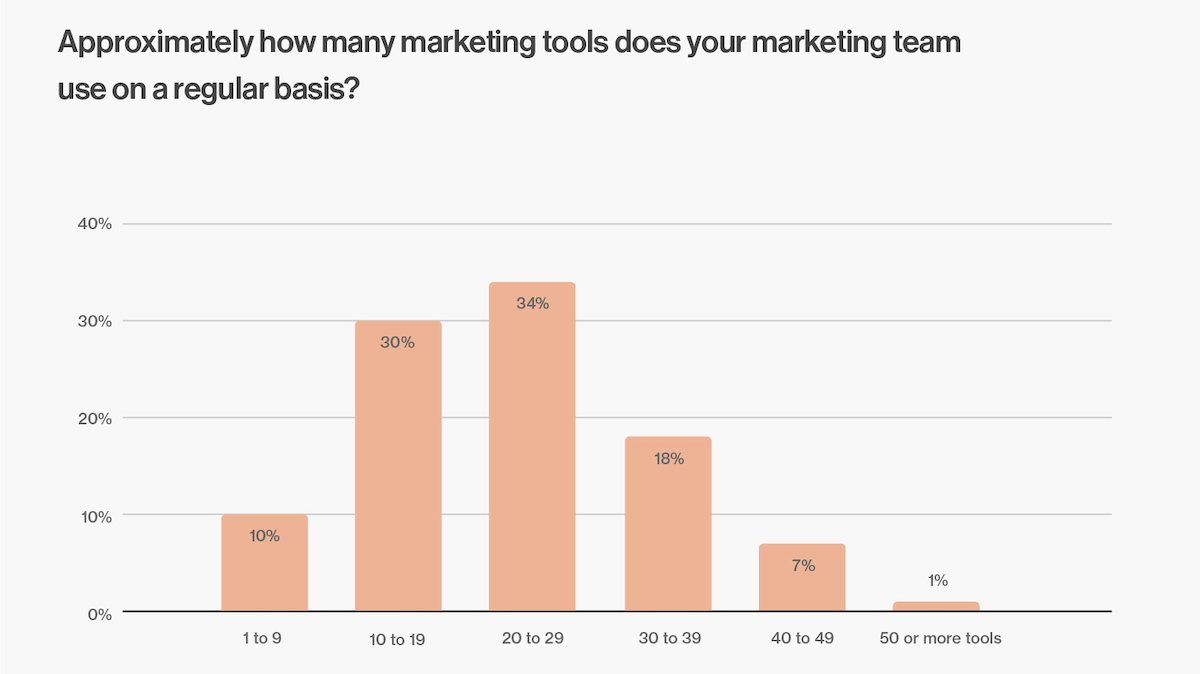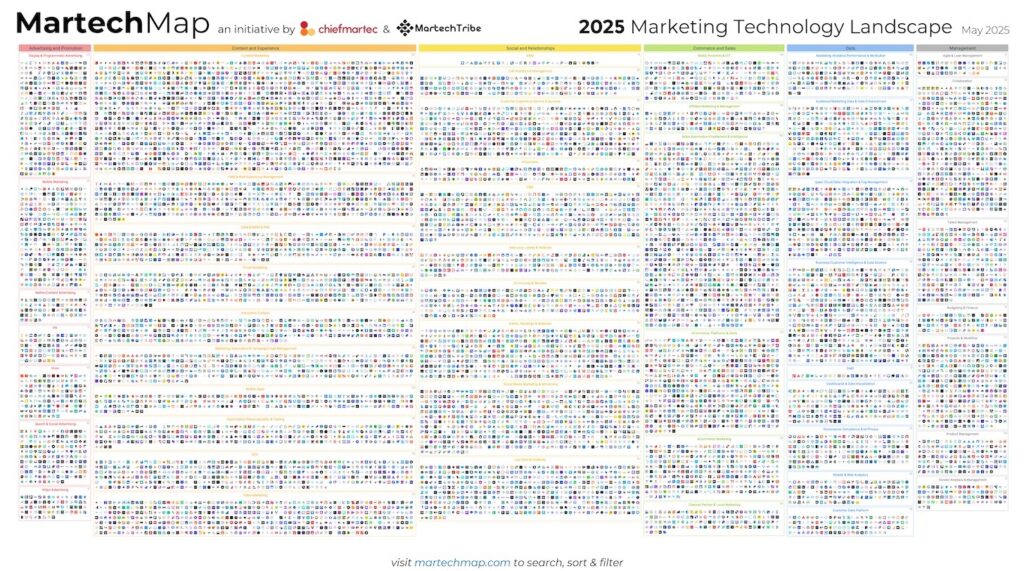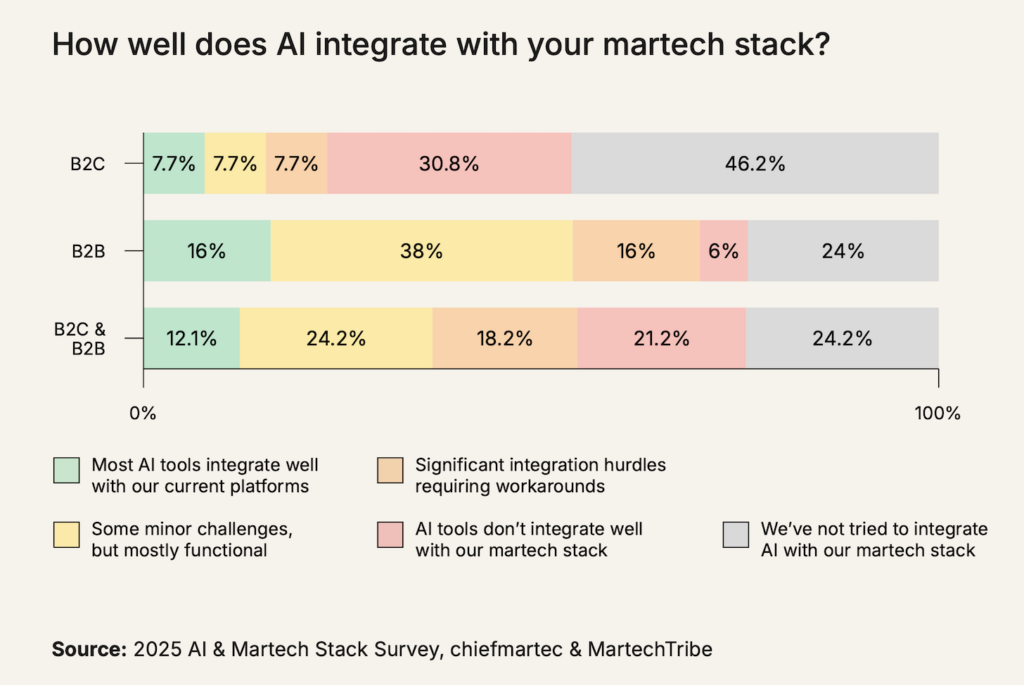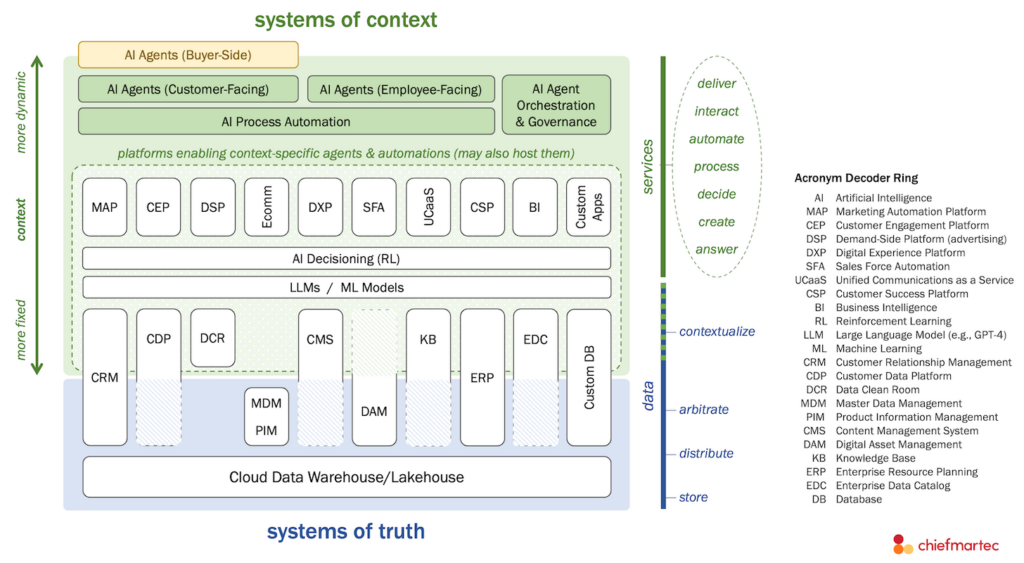The good team at Airtable, whom I featured in my MarTech keynote, Marketing Superpowers: How AI & No Code Transform Every Marketer into a Maker, recently published the Airtable Marketing Trends Report based on a survey of 300 marketing leaders.
This was their overview summary:
Despite investment in tooling and processes, marketers aren’t operationally equipped to build customer experiences at scale—and they’re punching in hours of manual work to make up the difference. So the question is: why is it happening? And more importantly: how can we fix it?
There were a couple of stats in their published report that stood out to me. The first was the graph at the top of this post: the percentage of marketers’ work week spent on manual, operational tasks. The median: marketing leaders lose 30% to 39% of their time on that kind of work.
If you’re thinking this makes a good case for automation, I’m with you. But hang on…
Here’s the other stat I found interesting: how many marketing tools does a marketing team use on a regular basis? The median: 20 to 29.
This isn’t surprising on its own. For years, we’ve seen this trend of expanding stacks, especially in marketing. There are a few hundred real-world examples with The Stackies.
But here’s something that did surprise me — at least at first:
The Airtable team was kind enough to share a couple of additional cross-tabulations of their data with me, and the above chart caused me to blink hard. Marketing teams that use more tools actually spend more time on manual tasks? Wouldn’t you expect that more tools would eliminate more manual work instead?
Well, that’s what we should expect.
But I’m sure that many of you know why that isn’t what actually happens today. The problem is that too many martech tools are still not integrated with each other. Or, plenty of them are “integrated,” but it’s a superficial instead of deep integration.
When you use martech tools that aren’t deeply integrated, you’re the one who ends up doing the work of integration — cutting-and-pasting data and content, mapping concepts from one tool to another, figuring out how to stitch together disconnected analytics and workflows. It’s manual, time-consuming, hard to maintain, prone to error. You lose a ton of energy in the conversion between digital, biological, and back to digital again.
Let’s be honest: it sucks.
So what do we do about it?
One solution that I’m sure many critics of the marketing technology landscape will immediately offer up: use fewer tools! To a certain degree, I actually agree. It’s the concept of “rationalizing your martech stack.” Use the fewest tools possible to achieve your goals — but no fewer.
It’s the “but no fewer” that’s the catch.
Because at the same time that there are real benefits to reducing stack bloat, we’re also facing the challenges of continuous innovation and specialization in digital business. The Great App Explosion is an empirical reality. So we have to balance the trade-offs between consolidation and diversification.
Reduction can’t be the only tool in your toolbox to build the digital business of the future.
The more valuable solution — in my highly biased, but not unfounded, opinion — is better integration. The martech industry is headed in this direction. But we still have much further to go.
The best thing marketers can do to move this forward is to insist upon better integrations in the evaluation of martech tools before you purchase (or renew) them.
But will better integration really help reduce manual, operational tasks? Some additional data from Airtable’s study indicates that it will.
Marketing leaders with more automated data synchronization across tools spend less time on such tasks. Now, the drop from 35% to 32% isn’t dramatic. But I would humbly suggest that data synchronization is only the foundational layer in a great integration. Workflow, UI, and governance matter too. But it’s headed in the right direction.
The right tools, integrated deeply together. That’s the key to a truly automated stack.
